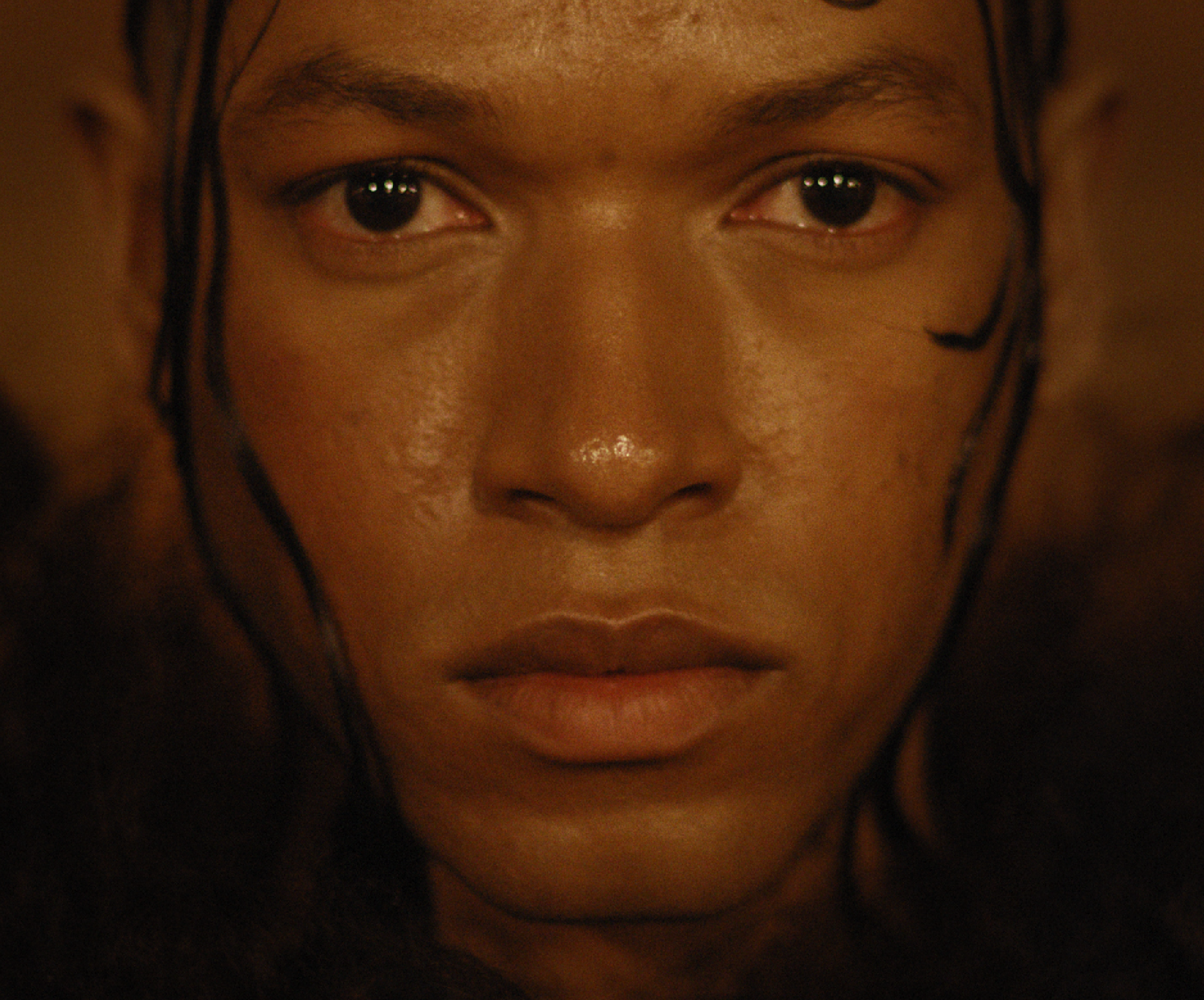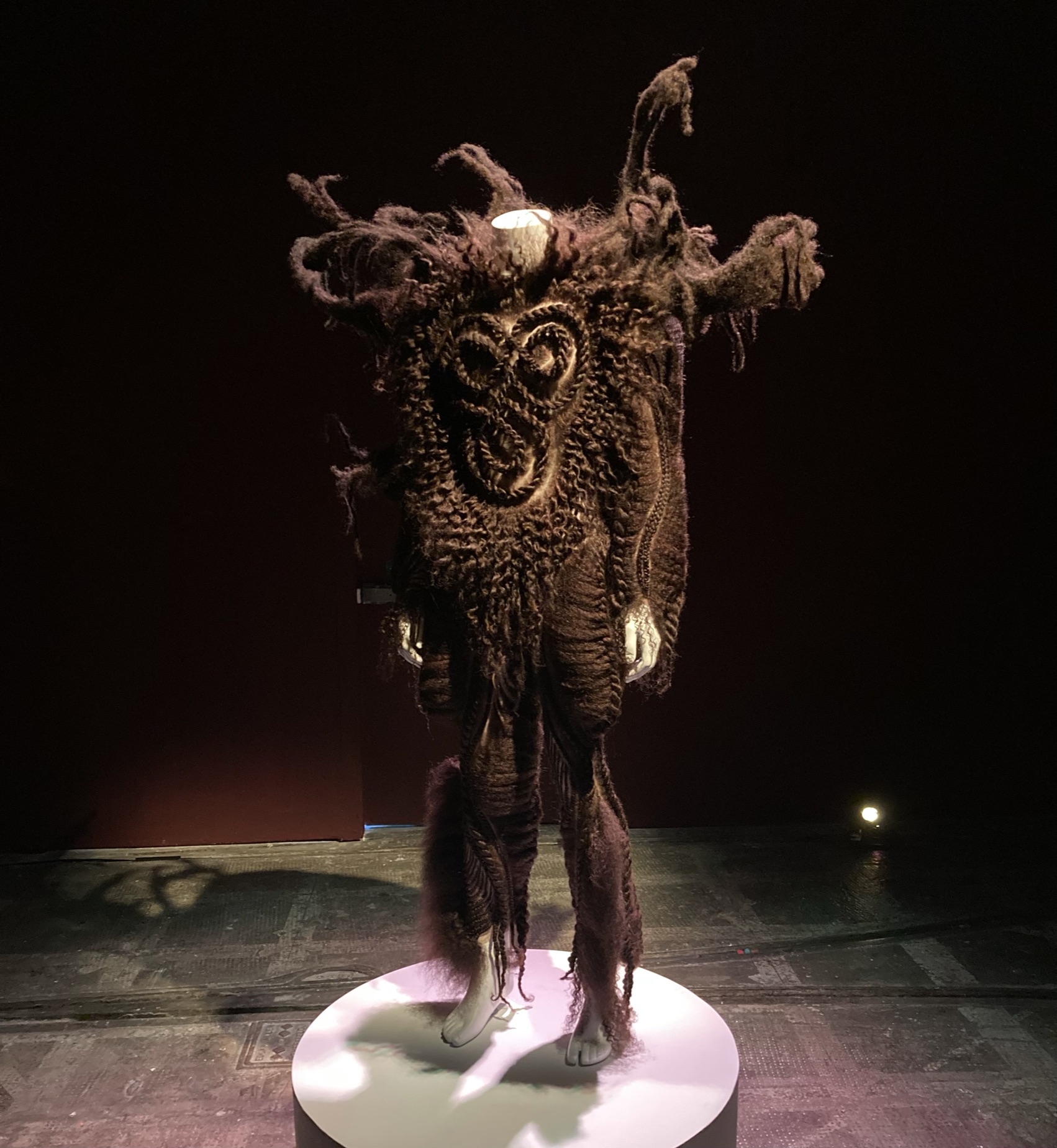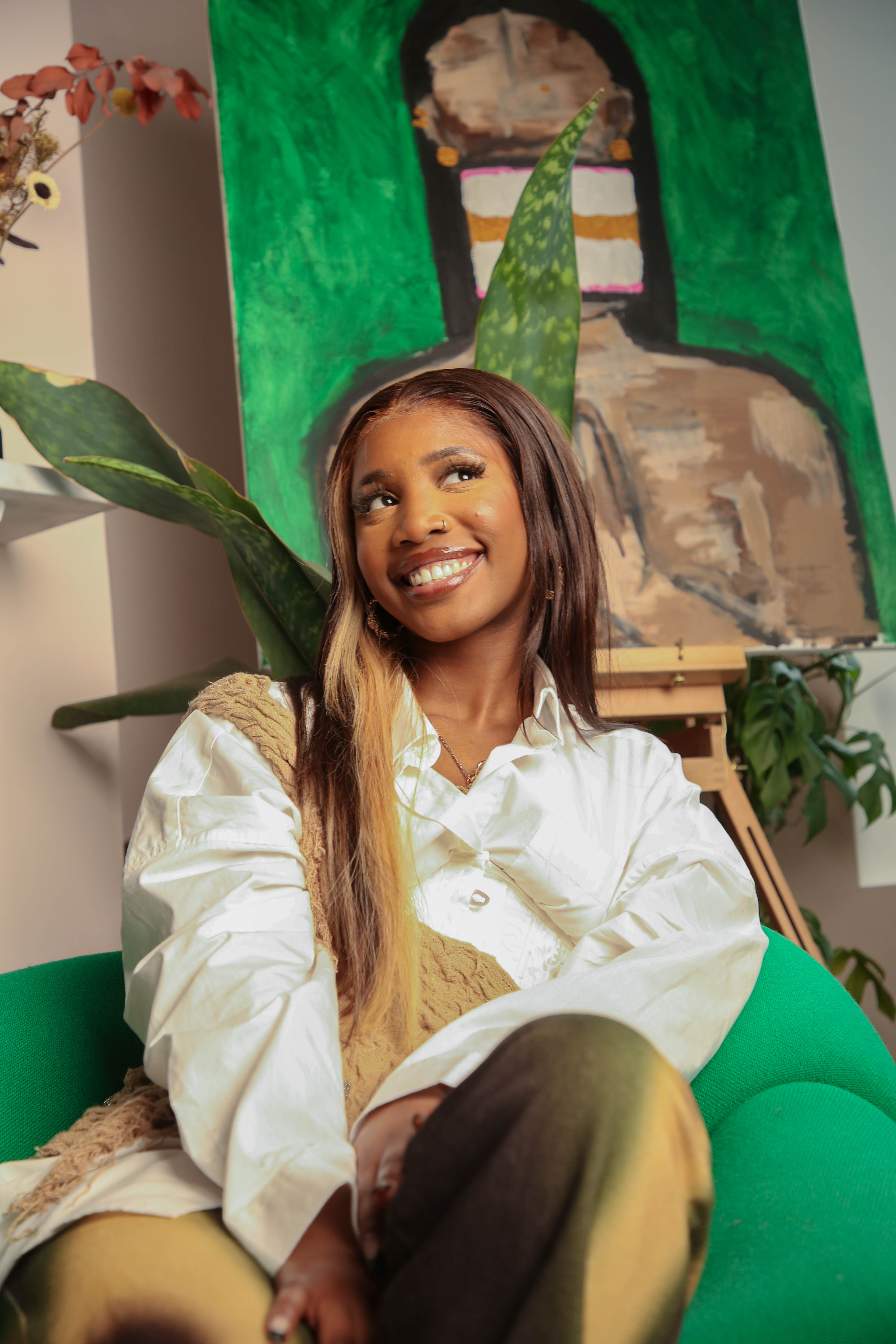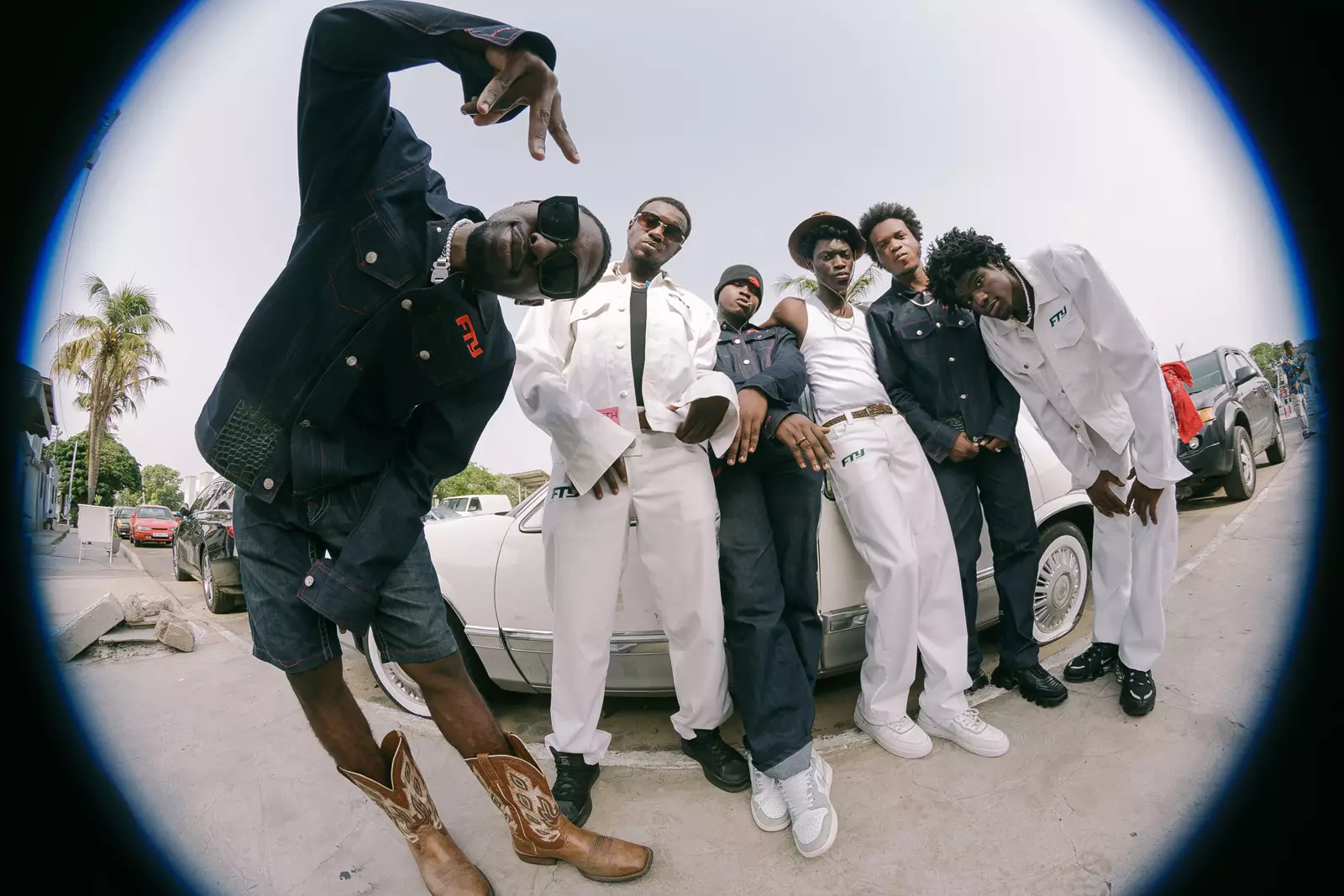Bring Me to Heal by Amartey Golding

Forma Arts and Media collaborates with multidisciplinary artist Amartey Golding and hair artist Kevin Fortune to present to us “Bring Me to Heal”. Described as a children’s story which tells us about the pain and compassion of human nature, Bring Me to Heal reveals the complex relationship that those with Black and mixed black heritage have in Britain. Inspired by his Anglo-Scottish and Ghanaian ancestry, Golding creates an otherworldly experience through this coming together of film, sculpture, sound and storytelling.
The short film follows a nomadic character who we view, wandering through the Victoria and Albert Museum, after hours. Stumbling across an ornate, knotted garment made from human hair (crafted by Kevin Fortune), he witnesses the birth of a transcendent, deity-like figure, and together they walk through the galleries marvelling at the creations of humanity. The beauty of a magnificent, golden altarpiece begins to drastically crumble when they reckon with its violent imagery and history.

London artist Amartey Golding draws together many references through this work. The use of hair is a nod to Afro braiding techniques and the body art practices of ancient Britons. Holistically, the work focuses on Rastafarian ideas of trauma, transformation and humanity – which unifies these culturally varied ideas and practices. The work is a melting pot of visual references and ideas – which makes it all the more difficult to engage with.
When engaging with the work, you can feel how much tension the piece was born out of. Golding describes the moment when he conceptualised the piece as one of reckoning with the state of the world. Bring Me to Heal was a call out to his ancestors – a bid to understand what they would do, and what information they would pass on during such precarious times. He thinks of the billions of people, whose individual stories make up his own. In the midst of COVID, Brexit and ever-growing racial tension in Britain, this piece truly is a call to heal. A call home.
Bring Me to Heal acts as a plea for us to reckon with our emotional past in order to dictate a future free of these generations of trauma; a plea that interrogates our emotional and cultural behaviours. The subject matter is deep and convoluted in the same way that the process of healing may be. The work searches for the point at which the experience of trauma reaches its climax, or pitfall, and veers into the process of healing and restoration. This restorative action which takes place in the exhibition draws heavily from the Rastafari movement and observes how this community, as well as others, deals with generational trauma – in opposition to the White British experience.
Using the Rastafari movement as a basis for this healing in Golding’s work was a perfect means of highlighting the collective resistance and healing that the movement teaches. Fundamentally, the Rastafari movement values remembering and understanding generational trauma, through the practice of an intentional, Pan-African, and conscious life. Those who follow are able to actively reckon with the pain and trauma that exist in their histories, whilst moving towards a lifestyle that connects them to their ancestors.
Built by a people enslaved from West Africa and the often-forgotten tribes indigenous to the Caribbean islands, Rastafarianism is the perfect point of departure. The point of departure from generations of pain and violence, to future generations of restoration and community.
The jump cuts between the characters of this story and those who adorn the walls of the V&A reveal where colonialism impacts us on a daily basis, even on a subconscious level. The editing style perfectly recreates the precarious position that Black people have in Britain. Within white British society, there is a constant cycle of retriggering that takes place, due to the divisive, racial ordering of society. Different people receive these triggers in different ways, but things and ideas as small as the artwork hanging in a museum can act as another point of injury and trauma.

The violent British history is a point of injury which is never too far. A sight of conflict which is never too far removed. It is a constantly unfolding cycle of trauma, which leaves Black and mixed Black people in a constant cycle of harm and disruption.
Golding’s call to healing is necessary and urgent. There is no point where the idea of healing is any more pressing than now. Golding uses his practice as a way to explore himself and the process of making. Simply through watching the final outcome, it feels as if we have an insight into every step of the way – from conceptualisation to end.
Check out the GUAP Arts & Culture section, to discover new art, film, and creative individuals.




![ZINO VINCI’S ‘FILTHY & DISGUSTING’EP BRINGS YOU TO THE CORE OF THE ARTIST [@ZinoVinci]](https://guap.co/wp-content/uploads/2023/10/Zino-4.jpg)





![Remel London’s [@Remel_London] “Mainstream” is a must attend for upcoming presenters!](https://guap.co/wp-content/uploads/2017/02/REMEL-LONDON-FLYER-FINAL-YELLOW-COMPLETE-1.png)